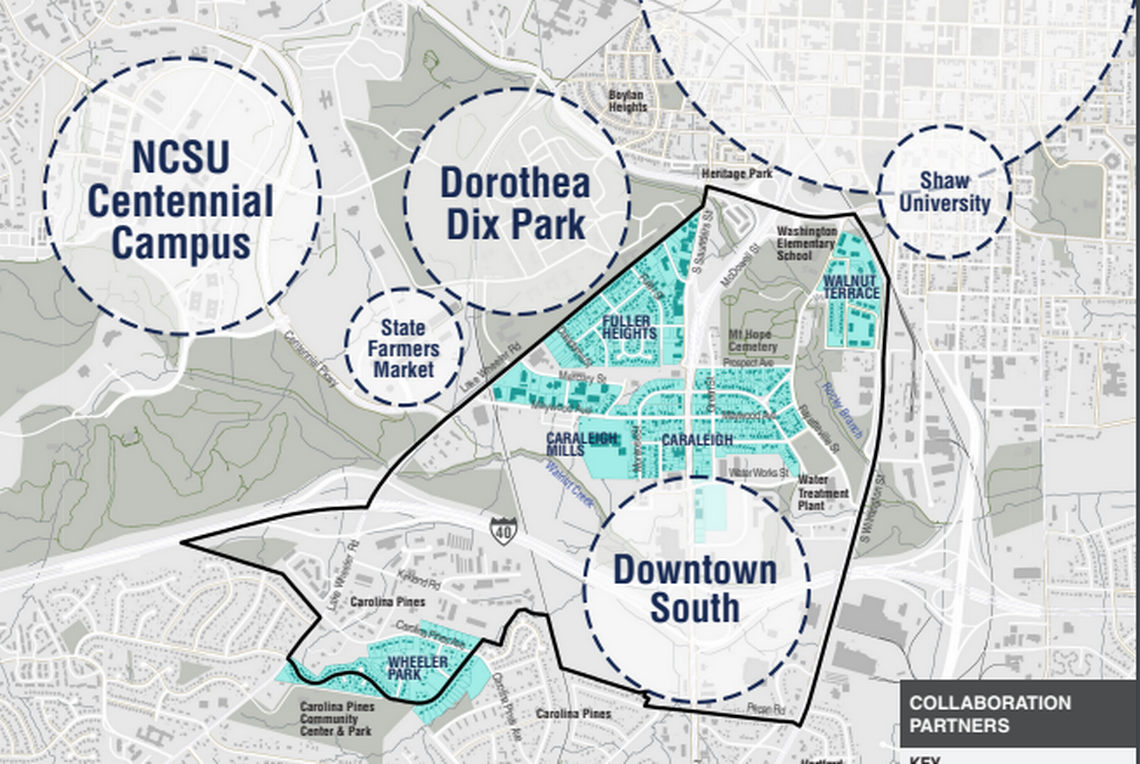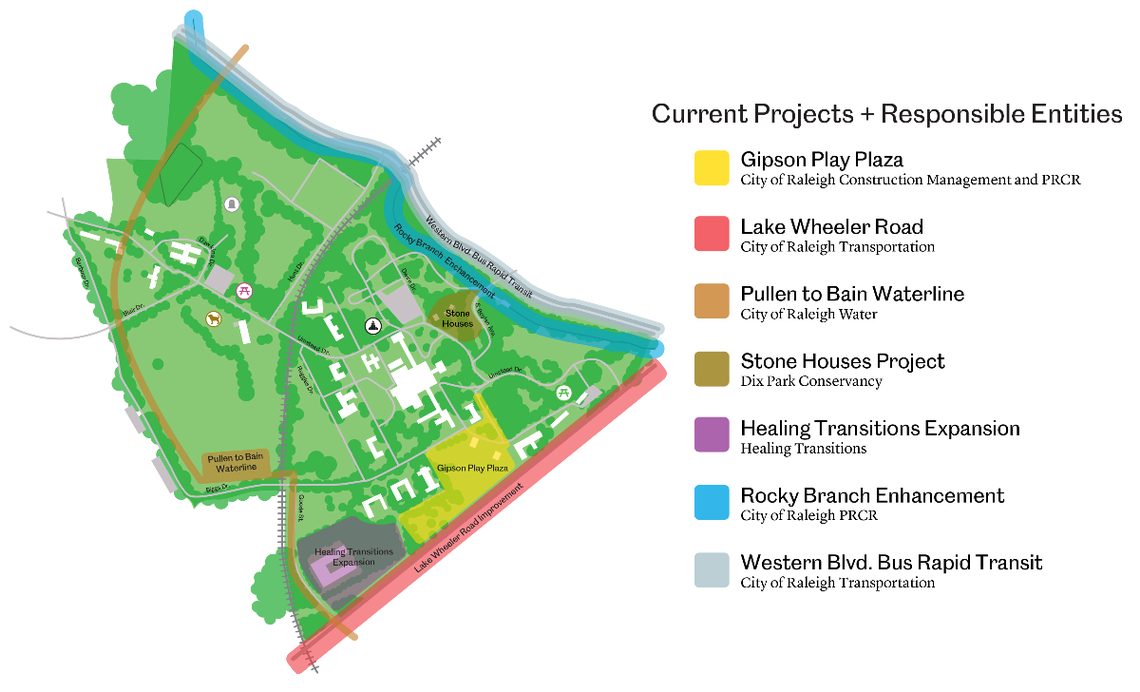Why the Dix Park ‘Edge’ Study stalled at Tuesday night’s Raleigh City Council meeting
Neighborhoods around Dorothea Dix Park face intense pressure as development begins in and around the city park.
The city of Raleigh ordered a study of the neighborhoods that line the park’s edge to better understand what existing residents want and find ways to help prevent gentrification and displacement.
But a number of concerns raised during a public hearing Tuesday night prompted city leaders to pause and send the draft plan to a council committee for more review.
Which neighborhoods are in the study area?
Fuller Heights, Caraleigh, Wheeler Park, Walnut Terrace, Caraleigh Mills and part of Carolina Pines. Hertford Village, Heritage Park and Boylan Heights border the study area. The study area also includes Mt. Hope Cemetery and Washington Elementary School.
Why this area?
The neighborhoods are facing immense development pressures due to their proximity to Dix Park and downtown, and to future developments like Downtown South and Park City South.
The area is one of the cheaper places to live in Raleigh. The area median income for a two-person household income is $74,200 a year in the city while the median household income in the study area is $39,863. And the residents in the study area are more diverse than the rest of the city.
But housing prices are going up.
The median home sale price in the study area jumped from $83,100 in 2015 to $215,500 in 2019, or a 159% increase, according to the report.
The median home sale price jumped by nearly $50,000, another 23%, from 2019 to 2020.
What’s happened so far?
Work on the report began in 2020 and ended in 2022. The city says it held nearly 30 virtual and in-person listening sessions and did four surveys, each getting between 500 and 900 responses.
Residents were concerned about development causing gentrification and changing neighborhood character and diversity. They also wanted more businesses come to the community, including a grocery; more programs to help keep people in their homes; and more bicycle and pedestrian safety measures.
What happened Tuesday night?
The Raleigh City Council held a public hearing on the plan and voted 7-1 to send it to their Growth and Natural Resources Committee for more discussion. Mayor Mary-Ann Baldwin voted against sending it to a committee, asking for the item to be discussed by the full eight-member council instead of the four-person committee.
Christopher Busbin, who spoke for the Caraleigh neighborhood, said they were concerned about reclassifying Fayetteville Street, which runs through downtown and the Dix edge study area. Reclassification would allow greater density and taller buildings where single-family houses sit now.
“Creating an urban corridor on Fayetteville Street is not only inconsistent with the 2030 Comprehensive Plan and future land use map, it would be the most dramatic zoning change proposed in the entire Dix edge study,” he said.
Jennifer Truman, who lives in the study area, asked the council to approve the plan.
“Dragging your feet and taking more time to have discussions doesn’t build affordable housing,” she said. “There are so many people here tonight to oppose this that constantly tell me and you that we need more housing that is affordable.”
Council member Jane Harrison asked that the study go to the council committee, which she chairs, in part to help new members better review it. Council member Jonathan Melton said he understood new members wanting to absorb the information but was worried about delays.
“I don’t want to push it two months because there’s a lot of stuff in there that, every day we don’t act on this, we’re losing opportunities,” he said. ”And we need to get moving on pieces.”
In addition to the concerns about Fayetteville Street, Harrison said she’s concerned about the affordable housing aspects of the plan.
“There’s a lot of amazing things when it comes to affordable housing, but I don’t see it actually translating into comprehensive plan amendments,” she said.

What happens next?
The City Council’s committees usually meet during the fourth week of the month, with the Growth and Natural Resources committee scheduled for 4 p.m. The next meeting is at 4 p.m. Feb. 28 but that doesn’t mean the study will be discussed. Two other rezoning cases were also referred to the committee.
How can I read the report?
The 55-page report can be found online on the city’s website, raleighnc.gov, and there is an 11-page executive summary.

What else is happening at Dix Park?
The Dix Park Conservancy, a nonprofit working with the city to raise money and awareness of the park, is hosting an event to learn about the various construction projects happening at and near the park.
They include the construction of the Gipson Play Plaza, improvements to Lake Wheeler Road and the expansion at Healing Transitions.
The event is 5 p.m. Feb. 15 at the chapel, 1030 Richardson Drive. People are asked to RSVP at dixpark.org/event/dix-park-project-summit
